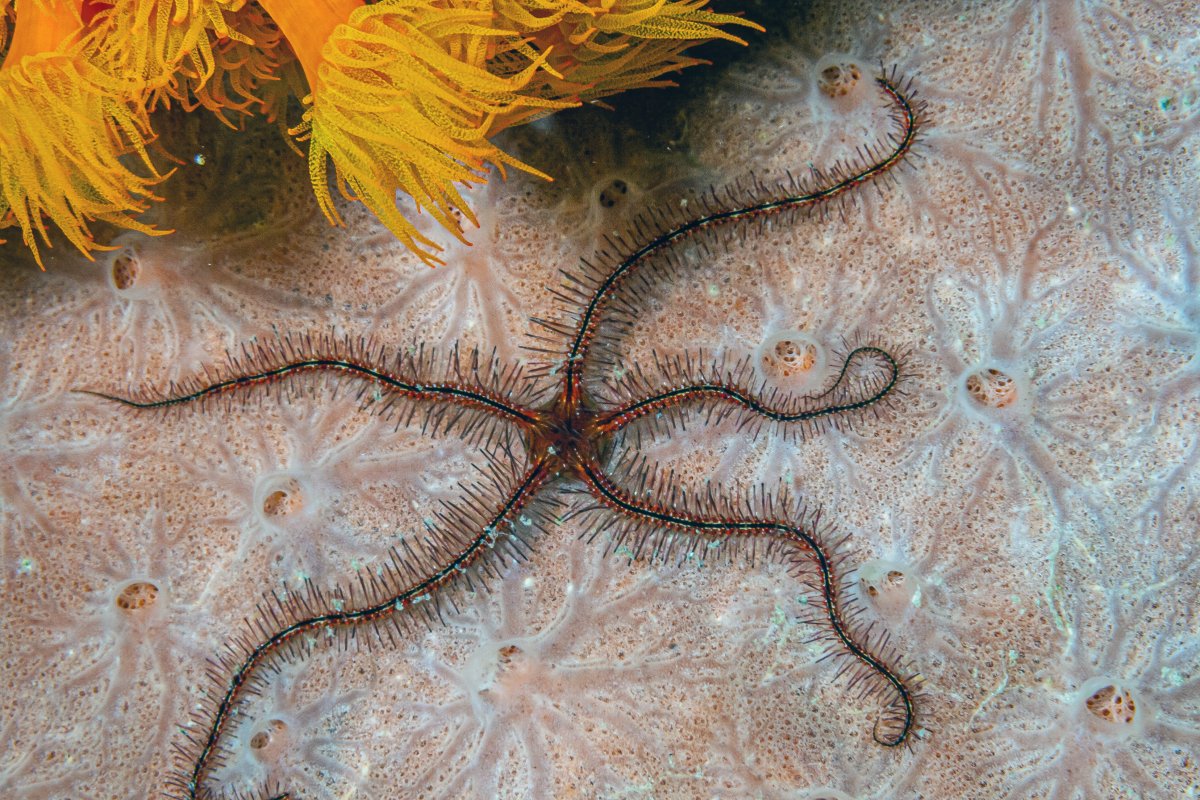Biologists have discovered that brittle stars—a sea creature with no brain—can still learn things, but we don't know how.
Brittle stars are relatives of the starfish, and similarly, have no head at all—instead, they have nerve cords that run down each of their five arms. They spend the majority of their time burrowing in the sand on the ocean floor or hiding in crevices—and, it turns out, learning from experience, a new study published in the journal Behavioral Ecology and Sociobiology reports.
To reach these findings, scientists studied the movements of 16 black brittle stars by using a camera. For half of the brittle stars, scientists dimmed the lights over their tanks for 30 minutes while they were feeding on shrimp. The other half got the same amount of food, but the 30 minute dark period occurred at a random interval during the day.

Scientists discovered that the first half of brittle stars—who were fed under dark conditions—began to associate darkness with food.
They began to realize that when it was dark, it meant that food was about to show up, the study reported.
Scientists found that the creatures continued to expect food even after a 13 day break, where the conditioning was not continued.
"There's no processing center," lead author Julia Notar, who did the research as part of her Ph.D. in biology, in professor Sönke Johnsen's lab at Duke University, said in a press release.
"Each of the nerve cords can act independently. It's like instead of a boss, there's a committee."
Notar said that the findings were "exciting."
"Classical conditioning hasn't really been shown definitively in this group of animals before," she said. "Knowing that brittle stars can learn means they're not just robotic scavengers like little Roombas cleaning up the ocean floor. They're potentially able to expect and avoid predators or anticipate food because they're learning about their environment."
Classical conditioning is a type of learning technique where two stimuli are paired. Humans are classically conditioned all the time.
This learning technique has already been studied in starfish however never in these brittle stars. There are other sea creatures that are yet to be studied, too, such as sea urchins and sea cucumbers.
Next, the researchers hope to find out more about the ways in which brittle stars learn.
"People ask me all the time, 'how do they do it?'" Notar said. "We don't know yet. But I hope to have more answers in a few years."
Uncommon Knowledge
Newsweek is committed to challenging conventional wisdom and finding connections in the search for common ground.
Newsweek is committed to challenging conventional wisdom and finding connections in the search for common ground.
About the writer
Robyn White is a Newsweek Nature Reporter based in London, UK. Her focus is reporting on wildlife, science and the ... Read more
To read how Newsweek uses AI as a newsroom tool, Click here.








